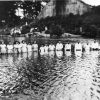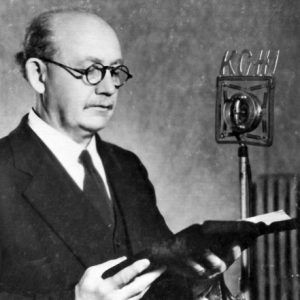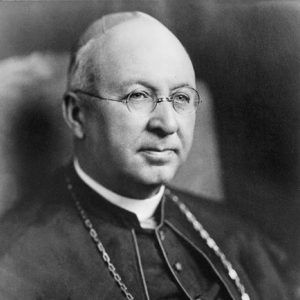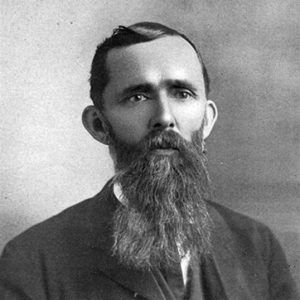calsfoundation@cals.org
Anti-Catholicism
Organized prejudice against Roman Catholics was a recurring theme in American history from colonial days through the early twentieth century, rising to a climax in the 1910s and 1920s. Nowhere was it greater in these years than in Arkansas.
The renewed anti-Catholic movement began around 1910 as a response to a massive immigration of Catholics from Italy and Eastern Europe. Roman Catholicism had become the largest Christian denomination in the United States by this time. This immigration, however, largely missed Arkansas, a state with one of the lowest percentages of Catholic residents in the United States. A lack of knowledge or personal experience with Catholic neighbors provided ideal ground for the growth of an anti-Catholic movement.
In 1912, a Missionary Baptist preacher in Magnolia (Columbia County), the Reverend Joseph A. Scarboro, established a weekly newspaper, The Liberator, devoted to the cause of anti-Catholicism. The paper was published until 1915 and claimed a circulation of 15,000. Similar single-purpose anti-Catholic newspapers were published in North Carolina, Georgia, Kentucky, Illinois, Oregon, and Missouri. The Menace, published from Aurora, in the Missouri Ozarks, was the largest of the group, with a circulation that reached 1.5 million by 1915. Several small-town Arkansas newspapers also took a stridently anti-Catholic stance in the 1910s, including the Gravette News Herald, the Sheridan Headlight, and the Wilmot Weekly. Some Arkansas men tried to earn a living as professional anti-Catholic lecturers, including Basil Newton, Gerald Sheehan, and Christian Henry Reeb. The state was also regularly visited in the 1910s by anti-Catholic lecturers from other areas of the country.
Much of the energy of anti-Catholicism from 1913 through 1915 concerned beliefs that priests were sexual predators who abused nuns and housekeepers and attempted to lure women into sexual relationships through confidences expressed in the confessional. In January 1913, the Arkansas General Assembly deliberated bills to require the inspection of convents to check for sexual slavery of nuns. The measure failed, but this discussion opened a wave of anti-Catholic rhetoric and a vigorous response from Catholic leaders in Arkansas. One monk at Subiaco Abbey, Father Boniface Spanke, enthusiastically countered the anti-Catholic measure. He built a “gospel wagon” that he used to travel through central Arkansas preaching against prejudice and explaining Catholicism to people who knew little about it. Father Boniface was drawn into a two-week-long debate with an anti-Catholic lecturer from Iowa, Otis Spurgeon, held in Morrilton (Conway County) in January 1914, which was attended by thousands of spectators and received national headlines.
The convent inspection bill was reintroduced in the 1915 session of the state legislature. This time, the bill passed handily, and Arkansas became the first state in the nation with such a law. Legislatures in Alabama, Georgia, and Florida passed similar laws to Arkansas’s Convent Inspection Act of 1915. When the first inspection took place at a convent in Mena (Polk County), and the sheriff found no enslaved nuns or skeletons of dead babies, the hysteria over sexual predation by priests subsided.
In the drive for prohibition of alcohol in the later 1910s, some Arkansans associated Catholics with the pro-liquor position. When the United States went to war with Germany in 1917, some argued that Catholics were not loyal Americans, given that a large number of Arkansas’s Catholics spoke German. Some Baptist leaders sparred with Catholic priests over access to troops being trained at Camp Pike and were discouraged that their prayer meetings attracted smaller crowds than Catholic dances with local girls in attendance.
The growth of the Ku Klux Klan in the early 1920s brought a resurgence of anti-Catholic activities. The 1920s Klan in Arkansas and elsewhere directed attention more toward immigrants, Catholics, moonshiners, and bootleggers than toward African Americans. The Klan organized at least 140 chapters throughout the state. Basil Newton, Arkansas’s home-grown anti-Catholic lecturer, became a Klan leader. He authored a tract titled “The Klan vs. Enemies,” and the chief enemy he identified was the Roman Catholic Church. Another leading propagandist for anti-Catholic views in the state was the Reverend Ben Bogard, editor of the Arkansas Missionary Baptist newspaper Baptist and Commoner, and he claimed membership in the Klan. Bogard authored a pamphlet, “The Ku Klux Klan Exposed,” explaining why the Klan so opposed the Catholic Church. Bogard and Klan leaders argued that the loyalty of Catholics lay with a pope in Rome rather than the American government. Catholics, they said, were not authentic Americans, and America was for Americans. The Klan publicly supported Protestant candidates who ran against Catholics for public office. In the 1924 Democratic presidential convention, the Klan successfully lobbied to oppose the Roman Catholic governor of New York, Al Smith, who proposed to end Prohibition.
Anti-Catholicism in Arkansas came to a climax with the 1928 presidential election, which pitted the Democratic candidate Al Smith against Republican Herbert Hoover. The election placed Arkansas at a crossroads, as Smith chose Joe T. Robinson, a senator from Arkansas (and a Methodist), as his vice-presidential running mate. In a speech given on the U.S. Senate floor earlier that year, Robinson followed Alabama senator Thomas Heflin, who had denounced the Catholic Church, its priests, and Al Smith in particular. Robinson repudiated in the strongest language Heflin’s comments as bigotry unworthy of a senator or a citizen. This courageous speech got Smith’s attention, and as a Southern Democrat, Robinson nicely balanced the ticket. Nonetheless, the possibility of having a Roman Catholic in the White House mobilized the anti-Catholic forces in Arkansas. Baptists in particular railed against the Smith/Robinson ticket in pulpits, newspapers, and pamphlets. Arkansas’s anti-Catholics lost in the end: Hoover won the presidency, even though Smith had carried Arkansas.
The public display of anti-Catholic positions declined after the 1928 election. The hostile rhetoric retreated from the religious and secular press as communists began to replace Catholics as the perceived threat. The convent inspection law was repealed in 1937. Myths and attitudes were thereafter expressed in more-private ways, within the church or home.
In the 1960 presidential campaign of John F. Kennedy, some Evangelical Protestant leaders staked out the same positions they had in 1928. But Kennedy’s victory (which included carrying Arkansas) and popular presidency dispelled many fears. Changes brought by Vatican II in the 1960s made the Catholic Church seem less alien to Protestant Americans. And by the later 1970s and 1980s, Catholics and Evangelical Protestants began to converge as allies on many moral and social issues, such as abortion and same-sex marriage. The strident anti-Catholicism of the early 1900s became a distant memory.
For additional information:
Alexander, Charles C. The Ku Klux Klan in the Southwest. Norman: University of Oklahoma Press, 1995.
Barnes, Kenneth C. Anti-Catholicism in Arkansas: How Politicians, the Press, the Klan, and Religious Leaders Imagined an Enemy, 1910–1960. Fayetteville: University of Arkansas Press, 2016.
Kodell, Jerome. “The Gospel Wagon of Father Boniface Spanke, O.S.B.” American Benedictine Review 61 (March, June, September 2010): 257–285.
Nordstrom, Justin. Danger on the Doorstep: Anti-Catholicism and American Print Culture in the Progressive Era. Notre Dame, IN: University of Notre Dame Press, 2006.
Woods, James. Mission and Memory: A History of the Catholic Church in Arkansas. Little Rock: August House, 1993.
Kenneth C. Barnes
University of Central Arkansas


 Benjamin Bogard
Benjamin Bogard  John Baptist Morris
John Baptist Morris  Robinson's Defense of the Roman Catholic Hierarchy
Robinson's Defense of the Roman Catholic Hierarchy  Joseph A. Scarboro
Joseph A. Scarboro 



Comments
No comments on this entry yet.